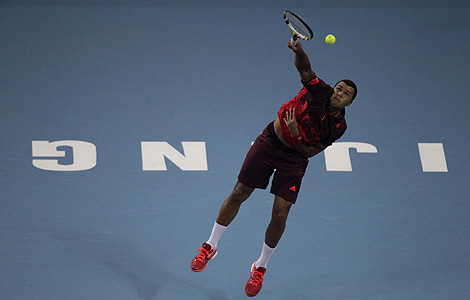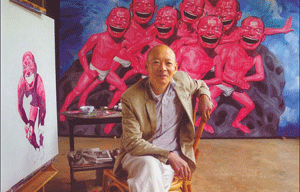From zero to billions
Updated: 2011-10-14 11:57
By Yu Wentao (China Daily European Weekly)
|
|||||||||

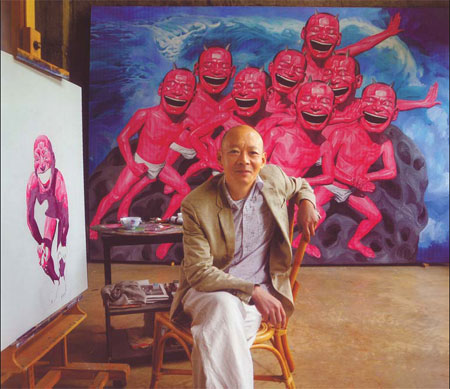
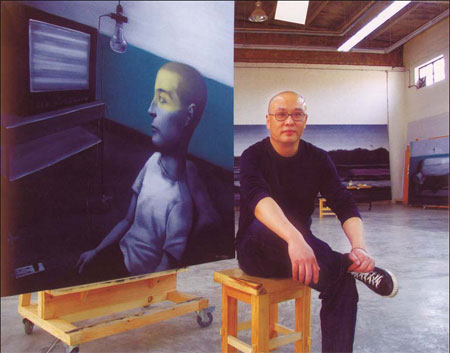
Twenty-five chinese artists give readers a glimpse of their lives and of how they work
In just over 30 years China's contemporary art market has developed from nothing to become a huge financial success.
No one would have imagined that a decade ago the Chinese contemporary art market would have an annual trading volume of 170 billion yuan (19.3 billion euros).
In order to provide a comprehensive look at Chinese contemporary art, the Foreign Languages Press has published an illustrated book titled At Work: Twenty-five Contemporary Chinese Artists.
The book profiles 25 painters, sculptors, photographers and conceptual artists, taking the reader into their studios and presenting intimate glimpses of their lives and works.
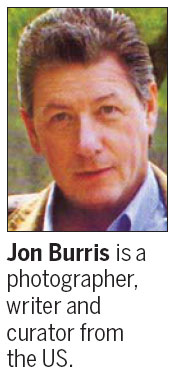 |
Traditional Chinese painting, oil painting, engraving and sculpture account for the majority of art creations since 1949, but they do not fit into the classification of "contemporary art" here.
Generally, it is acknowledged that China's contemporary art movement emerged from the Star Art Exhibition of 1979, three years after the end of the "cultural revolution" (1966-1976) and the beginning of reform and opening-up.
The exhibition displayed 150 artworks, mostly imitating forms of expression from Western Modernism.
After being relatively cut-off from the rest of the world, Chinese artists were thirsty for the new and exotic. The Star Art Exhibition was a breakthrough for new-generation artists.
The New Wave of 1985-1989 saw Chinese contemporary art grow up. Artists fully embraced new Western art forms such as Expressionism, Cubism, Abstract and Dadaism.
Chinese contemporary art ebbed in the 1990s for various reasons, but with the 21st century and its economic transformation and dramatic social changes, what used to be called "unorthodox" and "decadent" became fashionable.
The Third Shanghai Biennale in 2000 marked a significant shift and gave Chinese contemporary art an international platform. Dozens of biennales and triennials followed, resulting in an upsurge of interest in Chinese contemporary art, and a rise in prices.
The four top selling contemporary artists are Wang Guangyi, Zhang Xiaogang, Fang Lijun and Yue Minjun.
The media helped accelerate the process legitimizing the contemporary art scene and led to an increasing number of artists and art districts.
For instance, in addition to the iconic 798, Beijing has more than 10 art districts, with 50,000-plus people directly involved in producing art.
Jon Burris, the author of At Work: Twenty-five Contemporary Chinese Artists, is a US photographer, writer and independent curator.
In 2007, he created Chinophile, a fine art consulting and sourcing company specializing in contemporary Chinese art and photography.
It's been said that China's contemporary artists are like "dragons and fishes jumbled up", meaning some are good and some aren't. Burris is careful to select the best.
"I ultimately decided on these artists given the diversity of their works and what I believe to be their unique contributions to Chinese art over a period when so much experimentation has taken place and so much change has occurred," Burris writes in his preface.
His new book is neither a historical record nor a critical survey on the development of China's contemporary art. It is more like a work of reportage, providing interviews, which are vivid and natural.
Various art styles are reflected in Burris' book including Political Pop, Symbolism and Cynical Realism, all of which have emboldened the new generation of artists.
Of Burris' 25 interviewees, Wang Guangyi is the most representative. A 1984 graduate from Zhejiang Academy of Fine Arts, he established his reputation as the founder of China's Political Pop, with his Great Criticism Series in the 1990s.
He stamped the symbols of US commercial culture, such as Coca-Cola and Marlboro cigarettes, over the upraised fists of Chinese workers, farmers and soldiers in propaganda posters from the "cultural revolution", thereby catering to Western sensibilities.
Wang argues that his style is still "indeterminate", however, rather than just Political Pop. Starting in 1990, his paintings were displayed frequently at influential international art exhibitions.
In late 2010, he held a solo exhibition at Shenzhen, Guangdong province, which have a different take on "vision politics".
Wang believes the value of art and market price is not necessarily linked. A decade ago, his Mao Image was sold for 10,000 yuan. The painting is now worth 32 million yuan.
Asked about the future of Chinese artists, Wang's response is, "It is indeterminate. If you were to ask me what the color of the sky would be tomorrow, I could not say. All we can do is enjoy it today."



